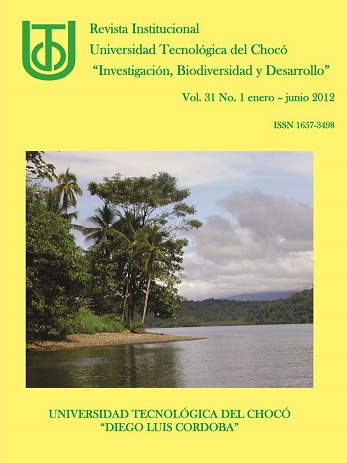Interannual variability of the Monsoon precipitation over Colombian Pacific
DOI:
https://doi.org/10.18636/ribd.v32i1.212Keywords:
Índice Dinámico Normalizado de Estacionalidad, Monzón del Oeste de América Ecuatorial, Pacífico colombiano, Precipitación, Región monzónicaAbstract
Objective: To analyze the principal characteristics of West Equatorial America Monsoon (MOAE) as an
important component of the climate system that affects the Pacific coast of Colombia.
Materials and methods: The criteria used to delimit monsoon regions is the Dynamical Normalized Seasonality
(DNS) index, obtained using wind data from NCEP, to then assess linear relationship between DNS and
interannual variability of rainfall in the Colombian Pacific region.
Results: It has been found that the most significant variations in rotation regimes between the JJA and DEF
wind vectors, fall into the category of monsoon for the lower levels of atmospheric pressure, with variations in
the wind vector angle over 120°. In addition, the DNS identifies significant seasonal changes in the wind field,
which are within the category of climatic monsoon.
Conclusion: When relating the DNS at 850 hPa and 925 hPa with precipitation, it has been found that the
monsoon exhibits strong regional characteristics, consistent with regional patterns of seasonal rainfall, affecting
significantly to the annual and interannual variability of rainfall in the Colombian Pacific region. It was also
found, MOAE abrupt change in extreme weather events associated with ENSO, where there is not only a high
temporal correlation between the two, but also signal MOAE is also able to reflect the asymmetrical patterns
of ENSO

